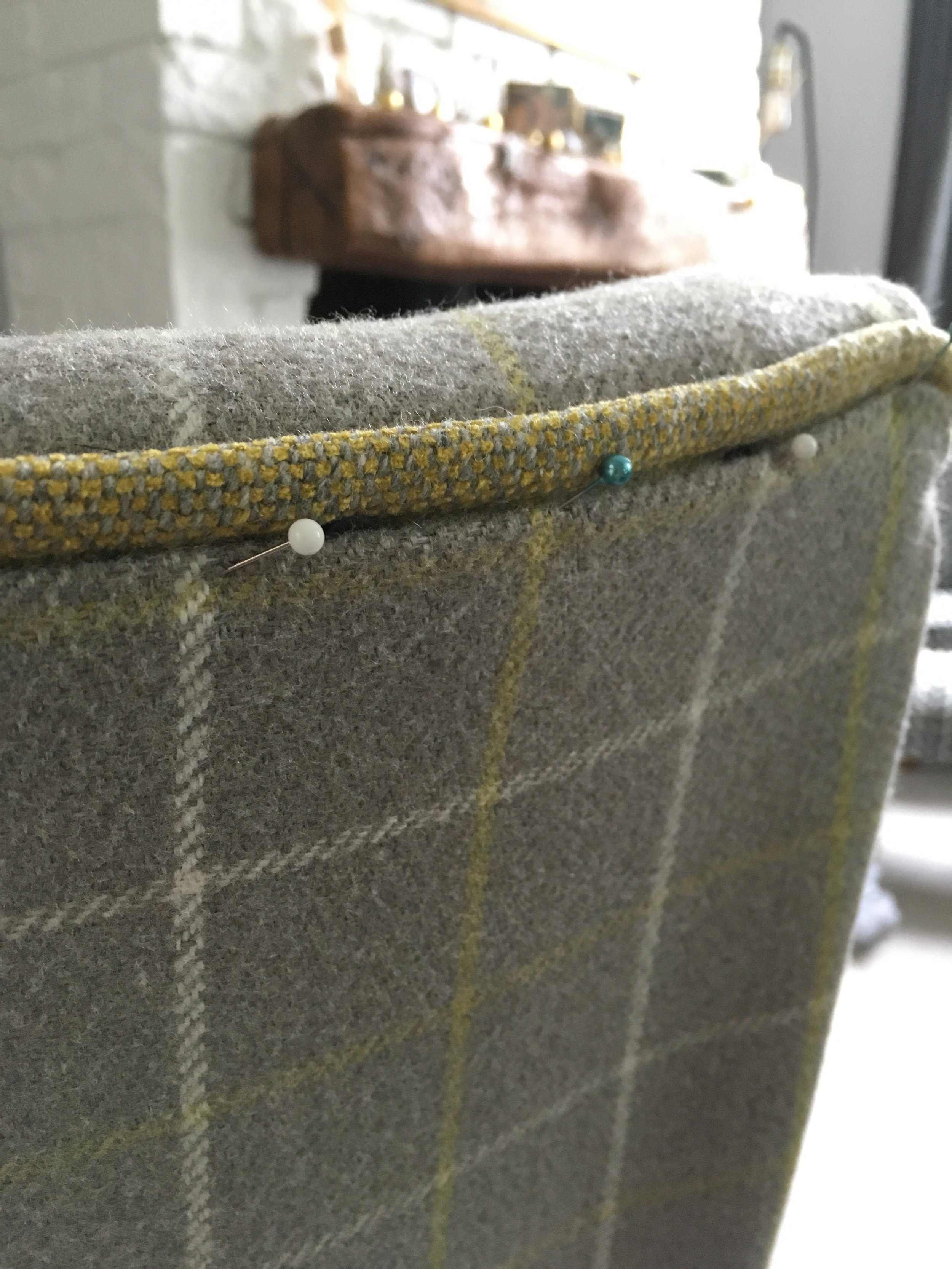Upholstery - Yellow Tartan Chair
Once my little blue chair was complete, I began my second ever upholstery project - the “twin” chair of the set which I had purchased from Gumtree. I thought about making the chairs matching as a set, however, I was keen to challenge myself and learn new skills.
The two chairs, although identical originally, have been re-built and reupholstered in very different ways, so it’s not just the fabric that is different. Here are some of the key learning that I made from my second project:
Traditional upholstery methods
This chair I upholstered traditionally, using Coir - a natural coconut based upholstery material which is an alternative to horse hair. The technique involves Bridal Stitching; creating large loops in a spiral a hand’s width apart and then stuffing an egg-shaped handful of Coir within the loops. The process continues by tightening the thread as you add each of the Coir handfuls, creating a robust base. Using a Regulator needle, you then spend a lot of time teasing through the Coir to loosen the hair and create an even finish. Once fully regulated, the Coir layer is then covered by Calico and wadding, before applying the final fabric.






The same applies to using horsehair, which I used for the seat back; again using Bridal stitching and regulating for an even finish.
Invisible stitching
Once you’ve created your piping, something that blew my mind about upholstery was invisible stitching. This involves using a curved needle to interlock the piping and both sides of the fabric, leaving a seamless finish. If you want to see a quick demo, head over to my Instagram page.
Fabric
Matching the fabric
I chose the yellow and grey tartan fabric from Dunelm Mill because I wanted a timeless pattern, a contrasting colour with the blue chair and also the chance to try and pattern match as part of the upholstery project. Ensuring that the tartan matches from the back to the seat top, to the front of the seat is something that, when not done right, will annoy you for years!
The beauty of pinning is that it allows you to match up the tartan and position, before you begin stapling, tacking or stitching. Once pinned, like this image, you’re able to begin the invisible stitching with the curved needle and upholstery thread.
I would love to hear your thoughts and upholstery stories - please leave a comment below! :)



